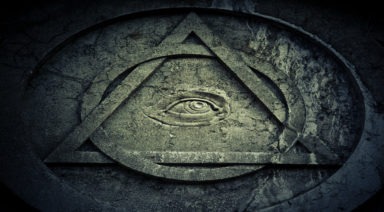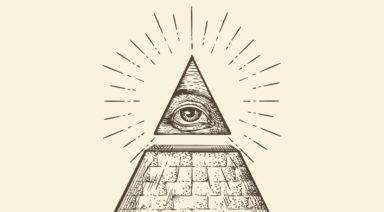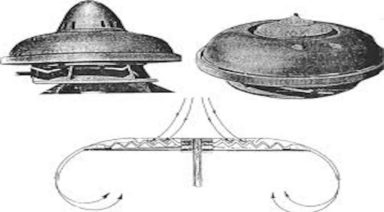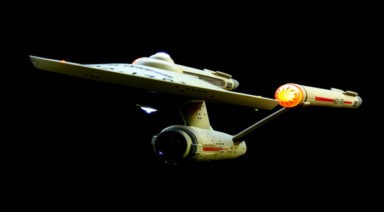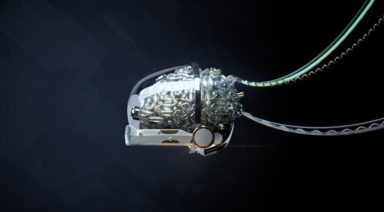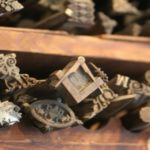The Ark of the Covenant: Symbol of Divine Guidance

If you’re able to contemplate The Ark of the Covenant and not think about melting Nazis, then you’re more sophisticated than I am. I fully admit that until I saw Raiders of the Lost Ark in the early 80s, I had no idea what The Ark of the Covenant was, but it caught my imagination. I wasn’t the only person who was inspired to research the Ark after the film. It became a fascination for many and a full blown obsession for some. Of course, none of the interest in the Ark of the Covenant could match the sudden passion for Fedoras, Bullwhips and Bomber Jackets. In some ways, it was a silly time.
Over the years, there’s been much conjecture about the Ark. What was it really? Where is it now? Who made it? Why was it designed the way it was? Many of these questions were offshoots of the theory that it was a device designed by ancient astronauts. Fortunately, that theory is mostly forgotten, although it’s pulled out of the attic, every now and then, and dusted off. Questions regarding its true design and purpose are purely conjectural and can’t possibly be known. I reject the idea that there’s anything extraterrestrial about it. If it were designed by alien gods, then why didn’t they give it a method of self propulsion, or at least wheels, rather than having to be carried around by 4 burly fellows. I’m only partially joking, here.
Some believe it to be the actual power of God, transmitted to the earth through the Ark, specifically at The Mercy Seat, the space between the 2 Cherubim on the lid. This presupposes a belief in the Judeo-Christian stories about the Ark, described in Judaism, Christianity and Islam – and they may be totally correct.
Without the Ark itself, the mystery will have to remain mysterious. I wouldn’t want it any other way.
Over the millennia, religious relics have been a massive draw for the faithful. Pieces of the True Cross, bones of saints, textiles, thorns, vials of blood, body parts and almost anything else that can be imagined, including tortillas, have been held in great reverence by true believers. They connect followers to their faith and become earthly proxies for the power of God. Accounts of miraculous healing and spiritual visions are frequent when in the presence of a holy relic. In fact, some of these relics have had a huge influence on Western culture, perhaps none more so than the Holy Grail and The Spear of Longinus. The Grail mythos was a powerful inspiration for great works of art, operas, classic stories of knights and chivalry and even a modern story about a world-wide conspiracy to hide the existence of the descendants of Jesus. The Spear of Longinus, also known as The Spear of Destiny, was supposedly the lance that pierced the side of Christ while upon the cross. This relic was sought after and apparently acquired by Adolf Hitler. Interestingly enough, there’s no historic proof that Hitler, or his Reich, ever searched for The Ark of the Covenant. It sure made for a great movie, though.
What was the Ark and why was it so important? According to sacred teachings, Moses ascended to the top of Mount Sinai for 40 days and met with God, where he received the 10 Commandments. When he returned to the base of the mountain and to his people, he was angered to discover that the Hebrews had fled Egypt, only to fall back into idolatrous ways. Moses threw the tablets and they shattered. He then was instructed to create another set of tablets for God to inscribe. The Ark was designed and revealed to Moses with specific materials and dimensions mandated. Once created, it was said to hold the shards of the first tablets of the Commandments, as well as the new ones. Eventually, depending upon which sacred text is read, it held not only the tablets, but also Aaron’s Rod, Manna, and Anointing Oil. As such, it would have held the most sacred relics of modern monotheism, other than faith itself.
It was said that God could “appear” and speak through the Ark, specifically on The Mercy Seat. It was carried about half a mile ahead of the Israelites as they traveled, always covered. The Ark wasn’t very large. It would have been about 3 feet 9 inches long, by 2 feet 3 inches wide. It had 4 rings, one at each corner, designed to hold poles for the transport of the the Ark. It was said to be made of Shittem wood, what we now know as Acacia. This wood is indigenous to the desert area of the Holy Lands. It’s dense and and therefore extremely strong. It’s also beautiful when worked, giving a lovely variance of colors. Other valuable objects were made of Acacia, but the Ark was then covered with gold, inside and out. The lid was made of solid gold and completed with the images of 2 Cherubim facing each other. Some authors have speculated that it was made of gold to make it more conductive electrically. Although that may be the case, it makes more sense to use gold, because the items within were the holiest earthly relics of the faith. Gold doesn’t tarnish and is the metal of the sun, the very face of life force on this planet. To use anything but gold would make no sense.
Sacred literature tells of the Ark being carried around the walls of Jericho, once a day for seven days and 7 shofars, ram horn trumpets, being blown. After 7 days, the walls came a tumbling down, as the song says. Who’s to say it didn’t happen?
Who knows what sort of awesome power the Ark held, or commanded within the minds and hearts of its keepers?
One of the more interesting tales of The Ark of the Covenant has to do with its capture by the Philistines. They took The Ark home to Philistia and the troubles began. Anywhere the Ark was housed, the populace became plagued by hemorrhoids and the city infested with mice. After a 5 city tour, and after the Ark caused the mutilation of a statue dedicated to a patron deity, Dagon, the Philistines decided to return the Ark to the Israelites. Along with it, they sent a “guilt offering” of 5 gold mice and 5 gold hemorrhoids: yes, hemorrhoids. There are some who consider the hemorrhoids to actually be buboes from the plague, while others presume them to be tumors. I’ll go with hemorrhoids. There’s something horrifically personal about having an entire city suffer from such an affliction. It makes perfect sense to me and it did the job.
There are numerous theories as to what The Ark of the Covenant really was. Some think it a communication device for aliens. Some consider it to be the dwelling place on Earth of God and a protector of the Israelites. Others think it may have been a weapon of massive destructive power, one that needed to always be covered to keep it from being lethal to the innocent. Some think it was a battery, capable of generating electricity. There are those who don’t think the Ark existed at all, believing it to be purely allegorical. Others look to it as a powerful device to be revealed and used at the end of our tenure on this planet. I don’t worry about such things, though. I’ll admit to not having a clue.
Where is The Ark of the Covenant now? That’s a darn good question. According to scripture, it was returned to the Temple in Jerusalem and that’s pretty much the end of non-apocryphal history, other than a reference to it being in heaven. Some believe that King Nebuchadnezzar of Babylon eventually stole it. Others believe it was hidden near the Dead Sea. Many believe it to be in a church in Ethiopia, although no one is allowed to see it, other than the monks charged with its safety. I’l bet that there are even some who believe it was deposited in The Well of the Souls in the Lost City of Tanis, by the ancient Egyptian king, Shishak, where it was eventually rediscovered by an American archeologist, stolen from him by Nazis and eventually found its way into a warehouse in the United States.
I don’t have a theory of what it really was, or what it was used for. I can’t offer an opinion as to its resting place, or if it ever existed at all.
I will say that the world is richer for The Ark of the Covenant and what it stands for, the concept of faith and divine guidance.
It inspires those who believe and it serves as a beacon of light for those who seek scriptural history. For those who love unsolved mysteries, its tantalizing questions spur creativity and debate. It fuels the power of imagination and floods the mind with endless possibilities, for in the presence of such mystery, the joy of being human is fully realized.
I wish you all peace and love.
The Incorporation of the United States of America

Who do you work for? Few people would say they work for a corporation called the United States of America. But researcher Jordan Maxwell suggests what Americans call their country is actually a corporation that “employs” all of its so-called citizens. In “Incorporating America,” Maxwell leads us through an uncomfortable idea that started to took shape after the Civil War, and culminated in the creation of the Federal Reserve in 1913.
Maxwell has been a student of the occult since 1959. His work has led him through hidden foundations of Western religions and secret societies, both ancient and modern. Emerging from his research, he has identified certain symbols that offer clues into how societies behave and who is behind the mass manipulation and abuse of the populace.
Maxwell’s book Matrix of Power, suggests there is a secret cabal controlling money, politics, and almost every facet of life without our knowing what’s really going on. Adding to his series Secret Life of Symbols, it stands as an intriguing interpretation of the symbolism in politics, religion, and corporatocracy.
Among the symbols Maxwell explores are references to water and its relation to the heartbeat of world commerce and politics, based upon what he calls the Law of the Sea. Water, he explains, is the female energy that delivers goods throughout the world. Further, he equates banks — the institutions that hold, lend, and dole out our money — with the banks of waterways. Riverbanks, Maxwell explains, direct the flow of the current/currency. Thus, money is cash flow, a liquid asset that ebbs and flows.




